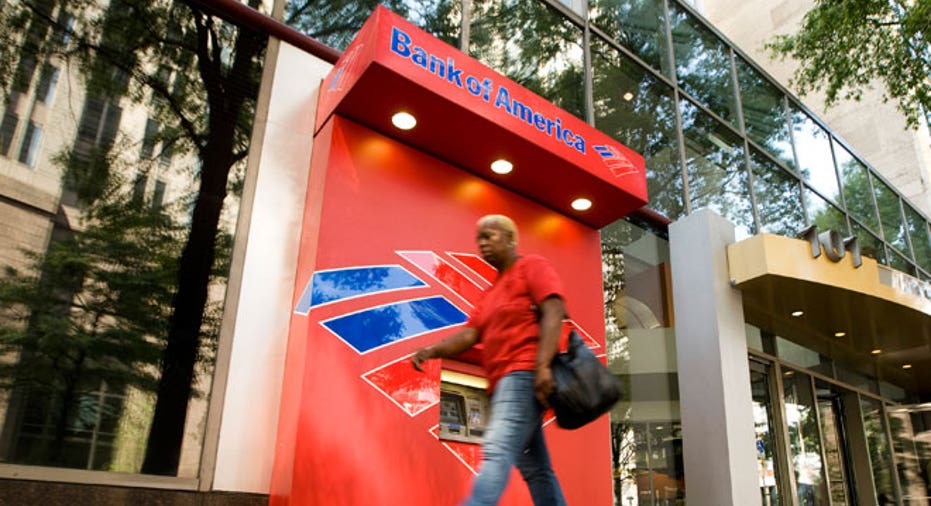Banks Take Baby Steps Into Social Media

From professional networking to entertainment, social media have permeated most aspects of our lives, and that hasn't been lost on the nation's banks.
Regulations in the banking industry have forced many of the large banks to take a pragmatic approach when it comes to social media. At the same time, some smaller banks are embracing the technology in innovative ways. Either way, consumers are benefiting from the financial industry's acceptance of social media -- as long as they tread carefully from a privacy and security standpoint.
"The biggest thing to come out of social (media) is the empowerment of the customer," says Brett King, chief executive and co-founder of Moven, the New York-based mobile banking service. "Customers can make their voice heard and get a stronger vote."
Banks want to be where their customers are
In this era of sharing on Facebook and Twitter, consumers want their banks to be where they are online, and the financial institutions have responded. Take San Francisco-based Wells Fargo.
Wells Fargo has been on social media since 2006 and is one of the first large financial institutions to set up a presence on social channels, says Renee Brown, Wells Fargo's director of social media. Since its early foray into social media, Wells Fargo's efforts have exploded and now include eight blogs, four Twitter handles, two Facebook pages, two LinkedIn pages and a YouTube channel.
"We are definitely doing a lot of social work to create engagement with our consumers," Brown says. "At the same time, we are making sure everything we do will shine well in front of all our regulators."
Walking that fine line between what consumers want and what's expected from the banks from a regulatory standpoint is the major challenge that banks must wrestle with.
On the one hand, they have to meet the demands of their customers, especially the younger generations, which are used to doing everything in a public light, but they also have to do it in a way that puts the regulatory bodies at ease. As a result, most banks are on Facebook, Twitter, YouTube and even Pinterest, but they aren't letting customers transfer money, make payments or even check their bank balances on those sites.
Rather, consumers can visit their social media pages to learn about products, get help, lodge complaints and often get answers in real time.
Consumers need to be information stingy
Not only does there need to be education on the part of regulators, but consumers have to be a little more private on social networks. Undoubtedly, if more banks use social media to let consumers check balances and transfer money, the security risks will rise. Hackers and other nefarious criminals are scouring social media sites every day, hoping to find information that will help them steal identities and wipe out bank accounts.
"Social media is a good way to begin the conversations with banks, but you never want to share account numbers or any personal data," says Steven Ramirez, president of Beyond the Arc, the Berkeley, Calif., social media consulting firm. "A lot of people use Twitter to interact with our bank and that communication is open to anyone to see. Sometimes, people forget that."
Most of the large banks aren't at the point where social media are more than just tools to interact and educate customers, but there are a few trailblazers that are melding personal finance and social media, and are seeing some success. Take Moven, which uses social media not only to connect with its customers but reward them for their influence on these social networks.
Banking innovators use Facebook to reward, save
New users can use their Facebook login to open a new account and also get a running total in real time of how much money they spent in specific categories, whether its coffee, food or social media events. But that's not the most popular service for Moven customers; Moven enables customers to send their Facebook friends money with a few clicks.
Recognizing the power of social media and word-of-mouth referrals, Moven later this year will start charging a $5.95 monthly service fee for using the debit card, but plans to waive the fee for people who refer a friend on social media if that friend becomes a customer. "If you talk about our business and promote it to your friends and that results in us getting a customer, that is significant for us," King says.
Just like people use social media to share tidbits about their daily lives and goals, SmartyPig, a technology platform developed by West Des Moines, Iowa-based Social Money, is helping people save in a more social way.
At SmartyPig, new users open a free account and set goals for saving for a specific thing like a wedding or a home remodeling project. Customers set up automated transfers from their existing bank account and can invite family and friends to donate to their savings cause via Facebook and Twitter. All the money is backed by the Federal Deposit Insurance Corp.
Coming soon: Banking on Facebook?
Although services like SmartyPig and Moven aren't widespread in the banking industry, it's only a matter of time before consumers will be able to engage in banking transactions in the places they hang out online.
"Somewhere down the line, consumers will be able to use Facebook or Twitter to check bank account balances," says Mark Schwanhausser, director of Omnichannel financial services at the market research firm Javelin Strategy and Research of Pleasanton, Calif. "It behooves financial institutions to change the kind of questions and find another way to verify who the customer is."
Copyright 2014, Bankrate Inc.



















